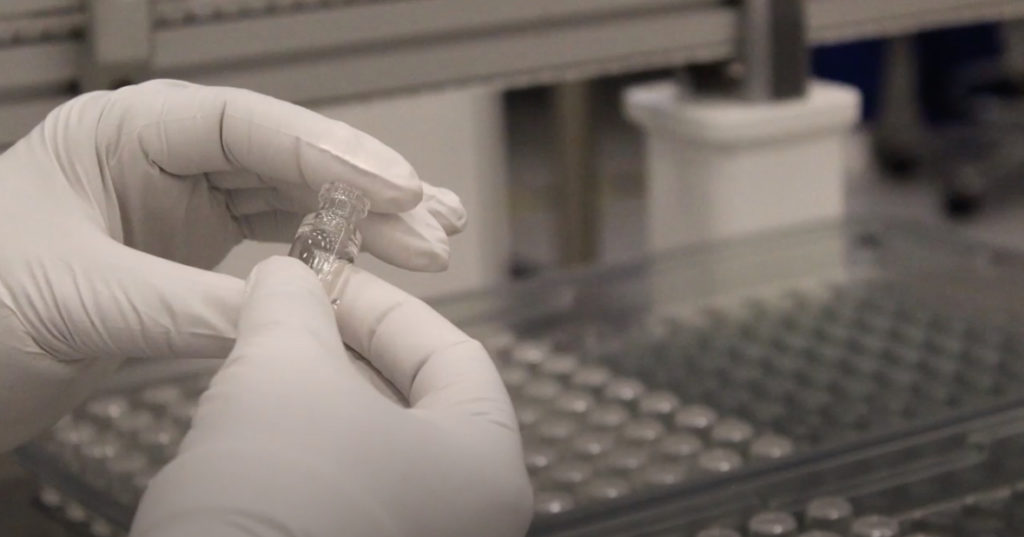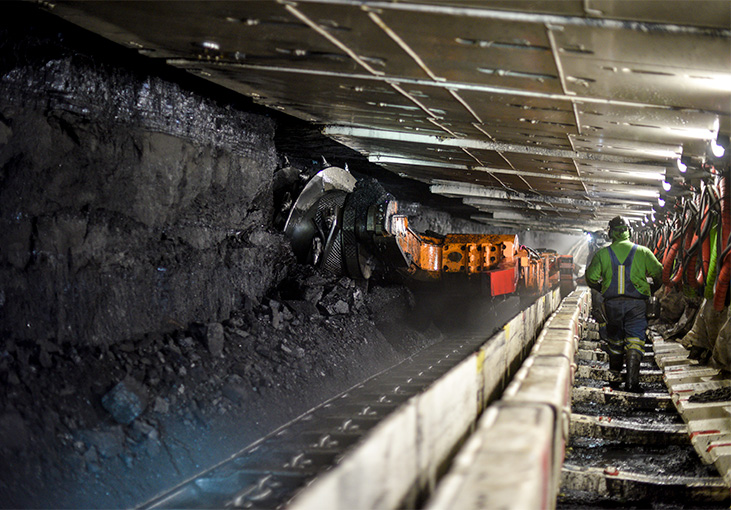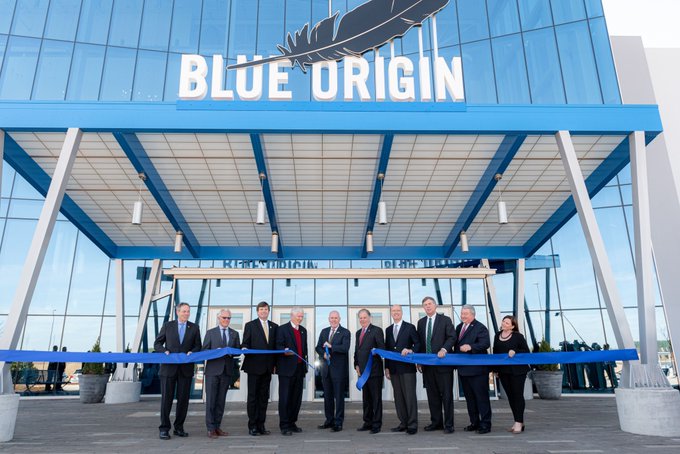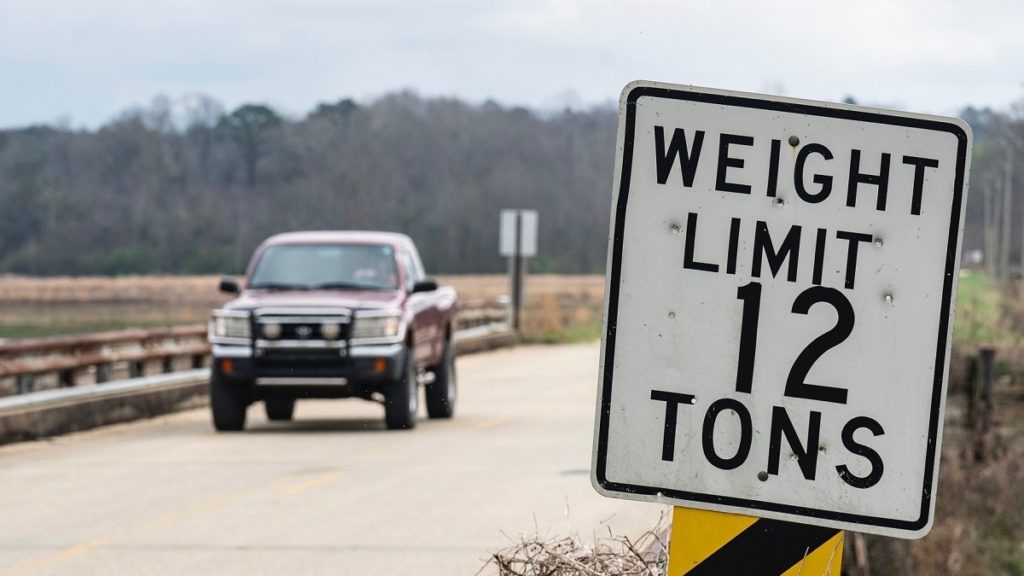Alabama earns high marks for business climate

Alabama’s workforce development and talent attraction programs ranked No. 2.
Auburn’s SiO2 plans $163M expansion to ramp up production of vaccine vials

The expansion will allow SiO2 to increase its production capacity to meet the U.S. government’s critical need for vials and syringes while maintaining the existing production needs of other customers.
Warrior Met Coal plans Walker County barge facility amid major expansion

This new mining operation in Tuscaloosa County involves a total investment of $578 million and will create 371 jobs.
New investment across Alabama topped $7 billion in 2019

2019 represents one of the most productive years for economic development in Alabama.
How Amazon picked the prime site for its $325 million Alabama fulfillment center

Annual payroll at the high-tech facility will top $46 million.
Blue Origin officially opens $200 million Alabama rocket engine factory

The $200 million investment is expected to create hundreds of jobs in north Alabama.
Alabama’s Commerce chief, Kay Ivey note economic development successes and challenges

Alabama has seen more than $40 billion in capital investment and the creation of more than 130,000 jobs since 2012.
‘Rebuild Alabama’ will solidify state’s economic development gains, Greg Canfield says

Alabama Commerce Secretary Greg Canfield said infrastructure improvements financed by Gov. Kay Ivey’s “Rebuild Alabama” plan would help the state’s economic development team sustain momentum as it seeks to recruit high-caliber jobs and companies. “I believe we need to focus on infrastructure as a key issue in Alabama at this critical time,” Canfield said. “We have had tremendous success in bringing great companies from around the globe to the state. For these companies to thrive and expand, Alabama needs to have the best roads and bridges it can.” Alabama’s economic development team registered impressive successes in 2018. The year’s biggest prize was a $1.6 billion Mazda-Toyota joint venture assembly plant that will create 4,000 jobs in Huntsville and accelerate growth in the state’s auto industry. “If we want to continue to attract world-class companies and high-paying jobs to Alabama, we need to make an investment in the state’s infrastructure system,” Canfield said. Ivey’s “Rebuild Alabama” plan calls for a 10-cent increase on the state’s fuel tax, rolled in over three years, to generate funding for improvements to the road network and at the Port of Mobile, the state’s only seaport. The governor this week called the Alabama Legislature into a Special Session, which began Wednesday, devoted solely to the infrastructure issue. The fuel tax has not been raised since 1992, even though it is the chief revenue stream for state funding of road repairs and improvements. Experts from the Alabama Transportation Institute at the University of Alabama noted in a January 2019 report that inflation, greater fuel efficiency and rising road construction costs have eroded the purchasing power of the fuel tax over time. Competitive disadvantage Other economic development leaders and business groups from around the state have joined Canfield in supporting the “Rebuild Alabama” plan as an investment in the future. Jim Searcy, executive director of the Economic Development Association of Alabama, said deficiencies in Alabama’s infrastructure system could soon begin to put the state at a disadvantage in the economic development process. “We are falling behind our neighboring states, the ones we most frequently compete with, in addressing our deteriorating infrastructure, and that’s crippling our ability to compete for investment and the jobs that investment creates,” Searcy said. Justice Smyth, the ATI’s outreach director and a former director of corporate development at the Montgomery Area Chamber of Commerce, said Alabama’s business-friendly environment and effective workforce development programs position the state to succeed in economic development. Alabama is not as strong in a third key area: the transportation network. “That’s where Alabama is struggling to stay as competitive as we are with the other aspects,” Smyth said. “Transportation is becoming more and more of a driver.” Revenue generated by Rebuild Alabama would permit the Alabama State Port Authority to make improvements to the ship channel providing access to the facilities at the Alabama State Docks. “Alabama’s port channel needs critical improvements to ensure Alabama industries remain competitive and enjoy transportation cost efficiencies to reach global markets,” said James K. Lyons, director and CEO of the Alabama State Port Authority. “Our port will fall behind competing ports, who are already modernizing their infrastructure, if our port is not deepened and widened.” Alabama Farmers Federation President Jimmy Parnell said the Rebuild Alabama plan would help the state’s agricultural industry and position rural areas for growth. “Poor and inadequate infrastructure is one of the greatest barriers to rural Alabama enjoying the same economic growth as larger cities,” Parnell said. The Business Council of Alabama, the state’s largest business group, also backs the infrastructure improvement plan. “The road to our future must be paved,” BCA President and CEO Katie Boyd Britt said. “Alabama’s transportation system is the backbone of the state’s economy and is crucial to our economic growth, and I commend Governor Ivey for making this a priority of her administration.” This story originally appeared on the Alabama Department of Commerce’s Made in Alabama website. Republished with permission from the Alabama NewsCenter.
Alabama looks to add to manufacturing gains along with tech, biotech growth in 2019

Alabama added more than 44,000 jobs across all industries in 2018 and ended the year by posting in December the highest average weekly earnings ever recorded in the state’s history. Alabama Commerce Secretary Greg Canfield shared the state’s 2018 economic development successes with fellow economic developers in Hoover Monday while sharing the Alabama Commerce Department’s plans for the new year ahead. The Economic Development Association of Alabama is holding its winter conference this week. “It reinforces to me what is the ultimate strength of Alabama as a competitor in the economic development arena and that is we work as a team,” Canfield said, citing state and local economic development entities and government leaders, the private sector and universities. Among the 2018 successes Canfield noted: • The $1.6 billion Mazda Toyota plant under construction in Huntsville is a gamechanger for the state with 4,000 jobs and 300,000 vehicles per year when it reaches full production. • The state saw $3 billion in new foreign direct investment that accounted for at least 6,000 new or announced jobs last year. • Shipt’s decision to expand in Birmingham and add 881 new jobs provided a blueprint for how the state can target the tech sector in the innovation economy. The Mazda Toyota deal adds to the state’s automotive sector that already includes Mercedes-Benz, Honda, Hyundai, Autocar and dozens of suppliers. Canfield said the state is on pace to become the second largest auto-producing state in the nation as soon as 2022. “It’s interesting to note that in every journal, every article that you read today talking about the automotive sector across the United States, you’re going to read that Alabama is the No. 5 state in terms of vehicle production,” Canfield said. “And that’s a great story, isn’t it? Because prior to 1997, we didn’t produce a single vehicle. In 2017 and 2016 – and we don’t have the numbers in for 2018 – but in the two previous years, Alabama hands and Alabama automakers produced over a million vehicles.” Pointing to a chart using Bloomberg data, Canfield said the state is steadily climbing the rankings compared to Indiana, Kentucky and Ohio and will trail only Michigan in a few years. “We actually believe that based on the numbers that Alabama is most likely the fourth largest vehicle-producing state, Canfield said. “We expect that by 2022, if the numbers hold and the forecast is true, Alabama will take the position as the No. 2 vehicle-producing state in the U.S. and that’s an amazing feat.” Job growth in the state is outpacing the experts’ projections, Canfield said. “We gained 44,300 jobs across all industry sectors in 2018,” he said. “Most economists believed we would be doing good and performing well if we added 30,000 jobs.” So how does the state economy continue to soar? One way is with Airbus building more airplanes. The company broke ground on a new assembly line in Mobile on Jan. 16 that will bring 432 new jobs as it produces the A220 line of aircraft, joining the A320 family of aircraft produced at its existing plant. “Having these two lines combined will ultimately make the state of Alabama the No. 5 production location in the globe for commercial large aircraft production,” Canfield said. With the Airbus project, the state is getting a 278 percent return on its “investment” over the next 20 years based on the incentives the jet maker received. Focusing ahead, Canfield said “2019 is going to be an important year. We’re going to have to do some things differently as we look to the future. We’re not going to be bashful about that, either.” Canfield noted the 2020 Census will be important to the state and its economic development efforts. A failure to count the state’s population accurately could cost the state federal dollars and representation, he said. “If we are undercounted, we will not get correct allocation,” Canfield said. Canfield said the state wants to build on the tech-sector recruitment successes of Amazon, Facebook and Google and put a greater emphasis on helping homegrown companies like Shipt stay in Alabama and grow. The strategy and program developed for Shipt is the blueprint to do that, he said. Broad partnerships, university support to drive STEM jobs, AIDT’s expansion beyond manufacturing training and working with local governments and private sector partners like Alabama Power on recruiting talent were some of the elements that made the Shipt project happen, Canfield said. Other areas that Canfield will emphasize in 2019 include: • The biotech and life science sector, • Workforce development, • Supplier network for Toyota Mazda, • Rural Alabama, • Aerospace and • Forest products. By the end of the year, Canfield said the Department of Commerce will take a fresh look at its long-term strategy. The first two versions of Accelerate Alabama helped the state add $28.8 billion in new capital investment and 105,000 new or announced jobs between 2012 and 2017. “I think it’s time to thing about Accelerate Alabama 3.0,” Canfield said. Republished with permission from Alabama Newscenter
Alabama ranks high in magazine’s 2018 business climate survey

National publication Site Selection again rated Alabama among the top states in its annual State Business Climate survey, reflecting its consistent attractiveness for high-value economic development projects. Overall, Site Selection ranked Alabama No. 8 in its Business Climate analysis, tied with Indiana. In a survey that is a major component of the Site Selection analysis, consultants and corporate real estate executives placed Alabama No. 7 among the states. Alabama scored in the Top 10 in both categories in the 2016 and 2017 Site Selection surveys. “The primary strategic objective of Alabama’s economic development team is to facilitate the creation of high-caliber jobs that benefit the state’s citizens and its communities,” said Greg Canfield, secretary of the Alabama Department of Commerce. “This high ranking, along with others the state has received recently, underscores that our team is consistently executing our strategy and achieving positive results for Alabama.” Between 2011 and 2017, economic development activity generated $33 billion in new capital investment to Alabama, along with 125,000 anticipated jobs, according to data from the Alabama Department of Commerce. In 2017, new capital investment tied to projects exceeded $4 billion, along with 15,000 jobs, the data show. This year, Alabama has attracted a series of major projects in key industrial sectors, led by Mazda Toyota Manufacturing USA’s $1.6 billion auto assembly plant that will create 4,000 jobs in Huntsville. Industry leaders including Facebook, Amazon, Hyundai and Honda have announced major Alabama projects in 2018. Recognizing results The high ranking in Site Selection’s 2018 Business Climate survey represents the latest recognition earned by Alabama and its economic development team. Others recent examples include: Business Facilities, another economic development-focused publication, ranked Alabama’s business climate tops among the states in an analysis that examined performance in several key economic categories. Besides the No. 1 ranking for Best Business Climate, Business Facilities gave the state high marks for growth potential and workforce training. Area Development, a national publication, ranked Alabama No. 3 in its 2018 “Top States for Business” survey and gave the state top honors for most improved economic development policies. Global Trade, a publication focusing on international business, selected Alabama as the nation’s top state for manufacturing in a comprehensive ranking. Area Development selected Alabama for its Silver Shovel Award, recognizing the state’s economic development successes in 2017. It marked the fifth consecutive year the state has won the Silver Shovel. Georgia claimed the top spot in the new Site Selection rankings. This story originally appeared on the Alabama Department of Commerce’s Made in Alabama website. Republished with permission from the Alabama NewsCenter.
$9B T-100 project not coming to Alabama as Leonardo loses contract bid

Earlier this year, global aerospace company Leonardo selected Moton Field, where the celebrated Tuskegee Airmen trained before being deployed to Italy in World War II, as the manufacturing site for its T-100 advanced trainer jet should the U.S. Air Force choose the aircraft as its next-generation trainer. The project would have created 750 jobs in Tuskegee. But on Thursday, news broke that Leonardo lost a bid for the jet project to Boeing. Instead of the T-100 jet trainer, the Air Force is purchasing 351 T-X aircraft, 46 simulators, and associated ground equipment to replace the Air Education and Training Command’s 57-year-old fleet of T-38C Talons. Secretary of the Alabama Department of Commerce Greg Canfield said they were disappointed as it wasn’t the result they had hoped for. “While we are disappointed that the Air Force chose an alternate for Leonardo DRS and the T-100 as its next jet trainer aircraft, it’s extremely positive that Tuskegee’s Moton Field has been recognized internationally as an ideal site for an aerospace project. Leonardo DRS is a world-class company, and their team has been great to work with throughout the selection process,” Canfield said in a statement. “Additionally, I commend officials at the City of Tuskegee, Macon County and Tuskegee University for their hard work on this project, which has united the community and the region. In particular, Joe Turnham, who put his heart and soul into the project, deserves special recognition.”
Honda Alabama opens new logistics buildings in $85 million project

Honda Manufacturing of Alabama has officially opened its new logistics buildings, an $85 million project that further deepens the automaker’s roots in Talladega County, as well as its significant imprint on the state’s economy. The new facilities add nearly 400,000 square feet to Honda’s existing 4.2 million-square-foot factory in Lincoln, where more than 4,500 workers build the Odyssey minivan, Pilot SUV, Ridgeline pickup and the V-6 engines that power all three models for customers around the world. “Our new logistics operations represent an $85 million investment in our operations, as well as continued investment in our associates, our products and in customer satisfaction,” said Mike Oatridge, HMA vice president. “This new space will help us better streamline our logistics operations, which will result in improved parts delivery, improved quality and improved organization across our production lines.” The new logistics facilities are mirror-image buildings at both Line 1 and Line 2. They are part of a multiphased project dedicated to the enhancement and revitalization of Honda operations in Alabama. “I’m excited to see these new buildings come alive,” HMA President Tsutomu Morimoto said. Commerce Secretary Greg Canfield speaks at a grand opening ceremony for the new logistics buildings at Honda’s Alabama factory. (contributed/Alabama Newscenter) ‘Setting the standard’ Alabama Secretary of Commerce Greg Canfield joined company officials in cutting the ribbon on the expansion. He praised employees for Honda’s success in the state, growing from an initial $400 million investment in 2001 to more than $2.6 billion today. “You guys here have been a vital part of the fabric of the automotive sector that is growing very rapidly in our state,” he said. Canfield also cited Accelerate Alabama, the state’s strategic plan for economic development. One of the plan’s key drivers is supporting the growth of existing companies in the state. HMA’s latest investments in technology that will prepare the facility and workforce for future models are exactly the kind of growth from within that Accelerate Alabama promotes, he said. “Honda is a brand that people across the globe recognize, respect and desire to own, and you are setting the standard for that quality and excellence right here in Alabama,” Canfield said. “We’re looking forward to the continued investment that occurs here.” Alabama Commerce Secretary Greg Canfield, flanked by Honda Alabama workers and officials, cuts the ribbon on the company’s new $85 million logistics buildings. (contributed/Alabama Newscenter) Additional investment More growth is on the way. Last week, HMA announced an additional $54.8 million investment to improve weld operations at Line 2. This expansion, which will add more than 50,000 square feet, is expected to be completed in early 2021. When combined with the 2017 investment announcements for the Line 1 and Line 2 logistics facilities and other investments, HMA has taken on additions of more than 425,000 square feet to its production operations, along with an investment of about $150 million. A University of Alabama analysis shows HMA has an estimated $6.8 billion economic impact in the state. Republished with the permission of the Alabama Newscenter.


